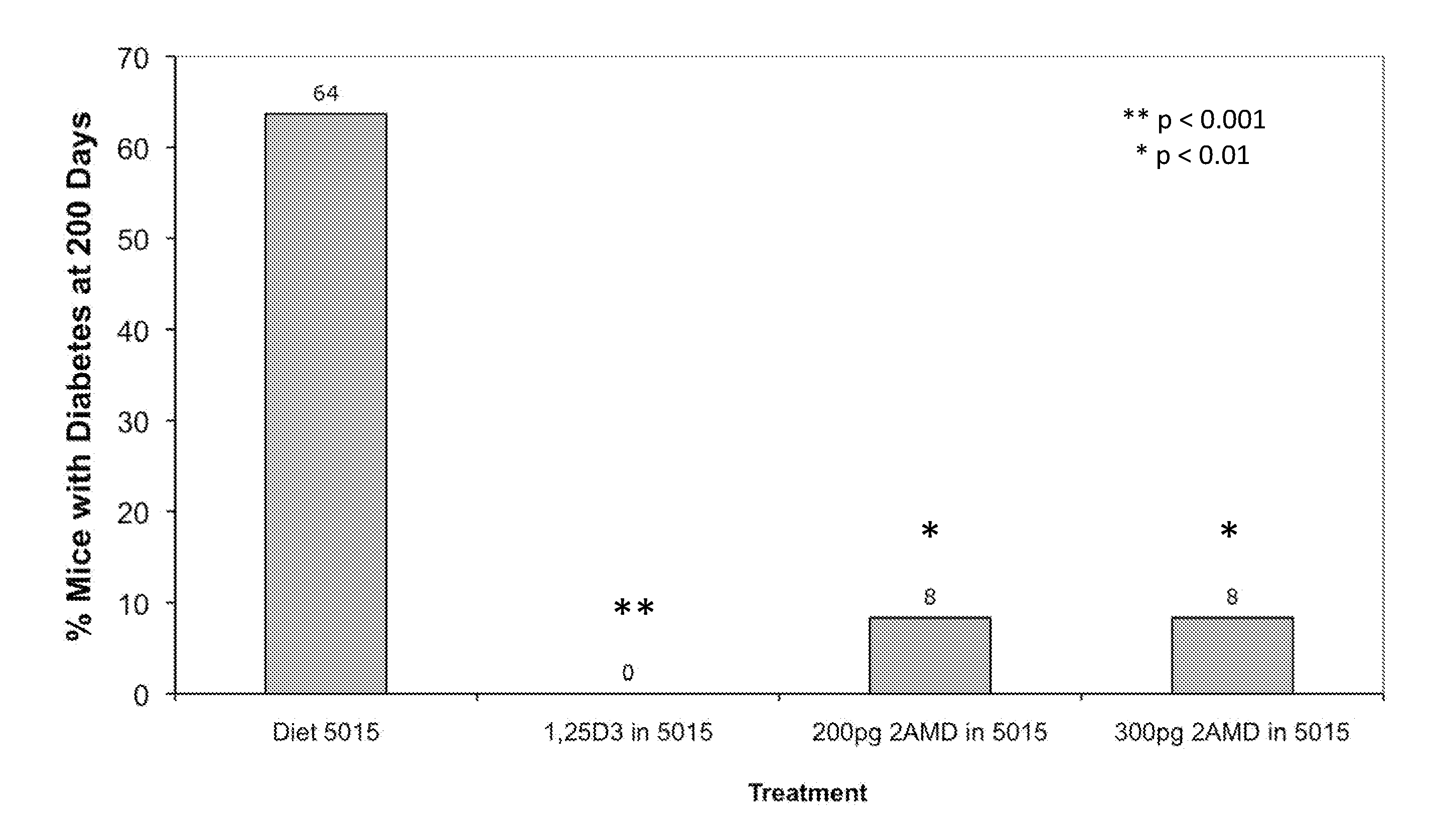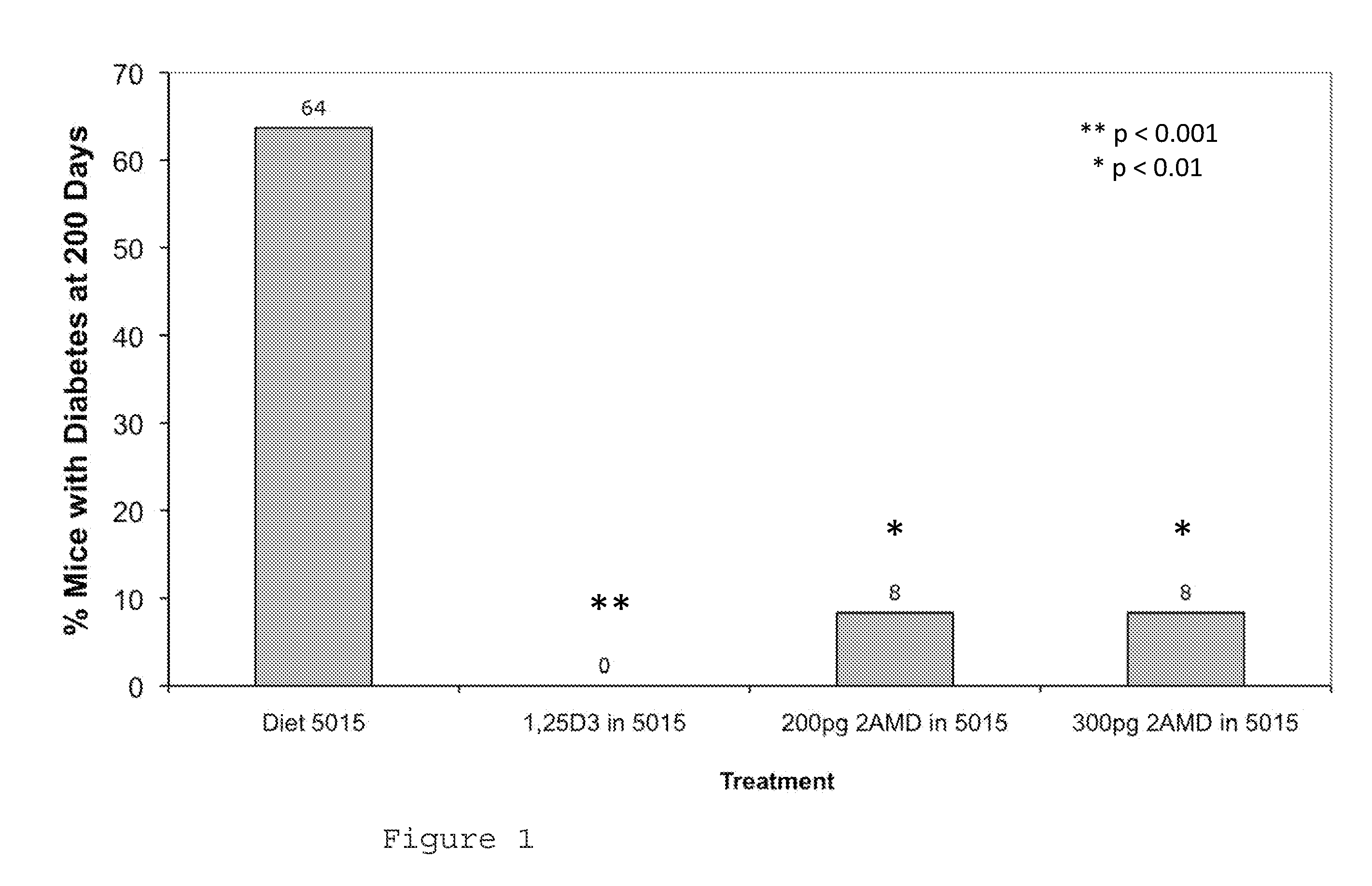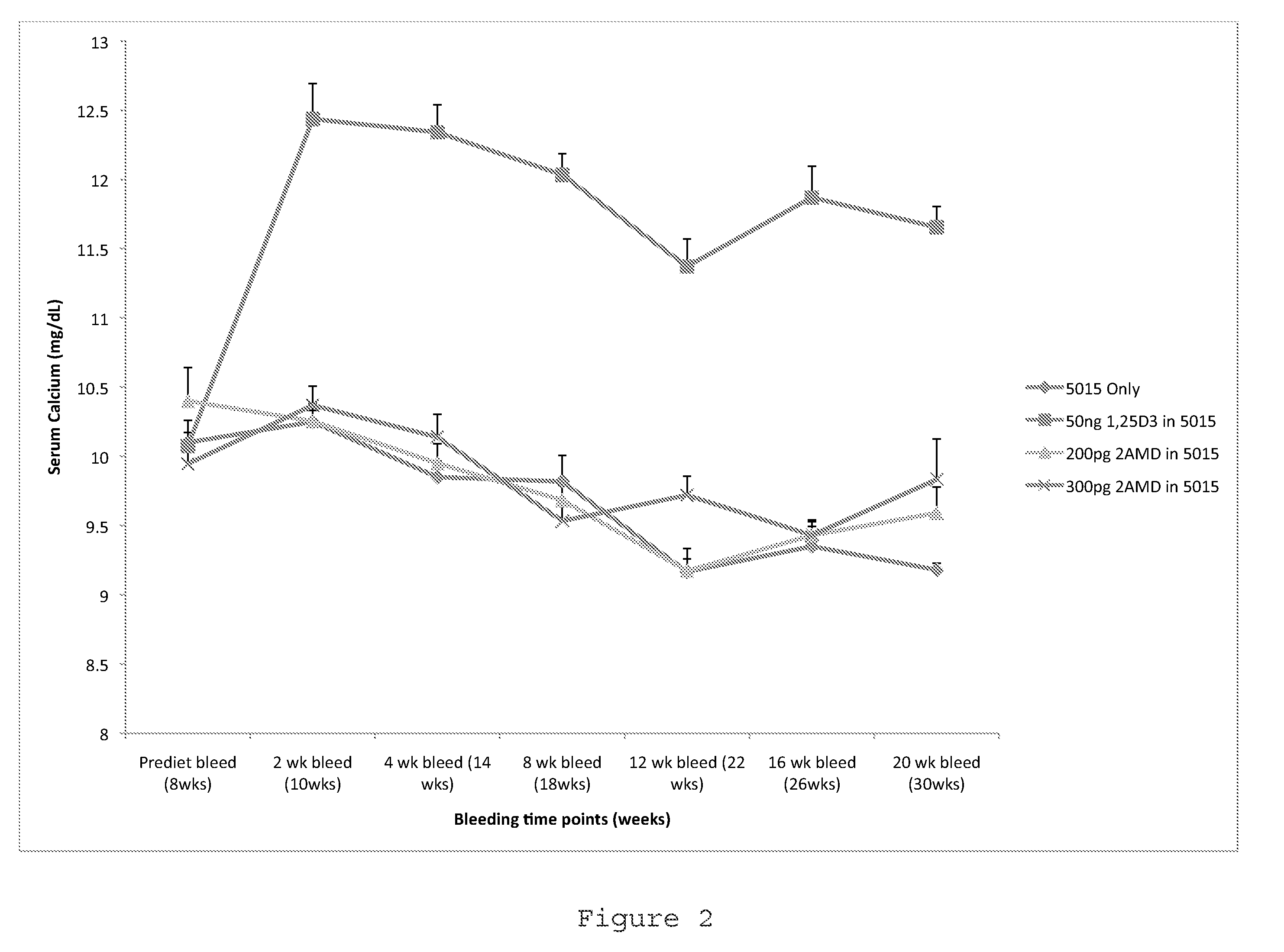Method of Preventing Type I Diabetes
a type i diabetes and type i technology, applied in the field of vitamin d compounds, can solve the problems of many serious problems, long-term and debilitating complications involving several organ systems, blood vessels, etc., and achieve the effect of preventing type i diabetes
- Summary
- Abstract
- Description
- Claims
- Application Information
AI Technical Summary
Benefits of technology
Problems solved by technology
Method used
Image
Examples
example 1
2AMD Type 1 Diabetes Prevention Study
[0070]In this example, the inventors show the effect of 2AMD on preventing NOD mice from developing Type 1 diabetes.
[0071]Diet. Breeding pairs were fed LabDiet™ Mouse Diet 5010 ad libitum (PMI Nutrition International, St. Louis, Mo.). Experimental mice were fed LabDiet™ Mouse Diet 5K52 meal form (PMI Nutrition International, St. Louis, Mo.). Female pups were weaned at three weeks and placed immediately on the 5010 diet. At eight weeks of age, mice were placed on 1 of 4 experimental diets: 1) chow, 2) 5010+50 ng 1,25(OH)2D3, or 3) 5010+200 pg and 4) 5010+300 pg 2AMD. In diets / treatments containing 1,25(OH)2D3 or 2AMD, the hormone was added to 1% Wesson® oil and mixed into the diet. Diets were fed in food cups at 3.5 g food / mouse / day and were replaced 3 times per week.
[0072]Evaluation of Diabetic Status. All experimental mice were weighed weekly and urinalysis was performed weekly starting at 10 weeks of age—Diastix® (Bayer, Elkhart, Ind.) were use...
example 2
2MD Type 1 Diabetes Prevention Study
[0075]In this example, the inventors show the effect of 2MD on preventing NOD mice from developing Type 1 diabetes.
[0076]Diet. Breeding pairs were maintained on LabDiet Mouse Diet 5015 (PMI Nutrition International, St. Louis, Mo.) containing 0.8% calcium and 3.3 IU vitamin D3 / g diet. Female pups were weaned at three weeks and placed immediately on a purified diet (Suda et al., 1974, J. Nutr. 100: 1049-1052). At eight weeks of age, mice were then provided 1 of 4 experimental diets: diet 11 only or diet 11+50 ng 1,25(OH)2D3, diet 11 plus 400 ng 2 MP or diet 11+500 pg 2MD. All purified diets were supplemented with vegetable oil containing fat soluble vitamins A, E, D and K (Suda et al., 1970, J. Nutr. 100: 1049-1052 [diet 11]). In diets containing 1,25(OH)2D3, 2 MP or 2MD, the compounds were added to 1% Wesson® oil and mixed into the purified diet. Diets were fed in agar form (Hayes et al., 1987, J. Nutr. 117:857-865) at 3.5 g food / mouse / day and were...
PUM
 Login to View More
Login to View More Abstract
Description
Claims
Application Information
 Login to View More
Login to View More - R&D
- Intellectual Property
- Life Sciences
- Materials
- Tech Scout
- Unparalleled Data Quality
- Higher Quality Content
- 60% Fewer Hallucinations
Browse by: Latest US Patents, China's latest patents, Technical Efficacy Thesaurus, Application Domain, Technology Topic, Popular Technical Reports.
© 2025 PatSnap. All rights reserved.Legal|Privacy policy|Modern Slavery Act Transparency Statement|Sitemap|About US| Contact US: help@patsnap.com



